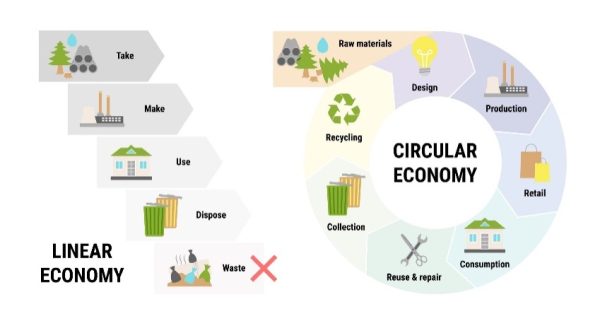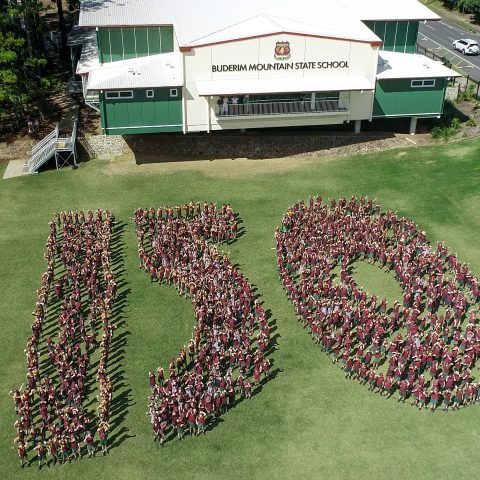Our PR Director, Michelle Smytheman, is passionate about helping emerging professionals in the communications industry and teaches at the University of the Sunshine Coast. As part of an assessment task this year, there have been some excellent blogs written by first-year students about emerging business trends. We are proud to share their work.
By Emma Scanlan
 Although awareness of environmental issues has become more prominent, only 15% of Australians are familiar with the term “circular economy”. The circular economy has emerged as a powerful trend that has become intertwined with the theoretical concept of sustainable marketing. In this blog, we will explore the emerging trend of the circular economy, its principles, and how it links to the relevant marketing theory of sustainable marketing.
Although awareness of environmental issues has become more prominent, only 15% of Australians are familiar with the term “circular economy”. The circular economy has emerged as a powerful trend that has become intertwined with the theoretical concept of sustainable marketing. In this blog, we will explore the emerging trend of the circular economy, its principles, and how it links to the relevant marketing theory of sustainable marketing.
Understanding the Circular Economy
The core concepts of the circular economy include keeping valuable resources circulating and out of landfills.
Our current economic system is the traditional “linear economy”, which involves taking, making, using, and wasting. The process associated with the linear economy is estimated to produce 1.7 times more waste than Earth can support on a long-term basis. This contributes to the increasing concerns regarding the climate, biodiversity, and pollution crises. Because of this, the circular economy has become a more relevant alternative to the linear economy.
Many people within society are a part of the circular economy without even knowing it. If you are buying products that last, avoiding single-use items, repairing when possible, and buying recycled and previously used products, then your actions are supporting stages of the circular economy.
The Circular Business Model
As the prevalence of a circular economy continues to grow, more businesses are faced with the pressure to transition towards circular business models (CBMs). However, this shift towards CBMs differs considerably from traditional business models, and transitioning towards a more circular world may be challenging. CBMs use already existing materials and products as inputs, thereby decreasing their environmental footprint compared to traditional business models. Small and medium-sized enterprises (SMEs) may find it difficult to obtain sufficient financing to assist in the transition from a linear to a circular business model.
This shift towards a circular economy will not only be beneficial for the environment but will also change how consumers interact with the packaging and branding of businesses that they purchase from. Consequently, businesses will have to reconsider the effectiveness of traditional marketing in an economy that focuses on sustainability and reusability. In a circular economy, marketing campaigns need to emphasise the mission and impact behind the brand. As companies place a growing emphasis on environmental concerns, marketing is evolving from a limited, sales-driven approach to a broader business strategy, where sustainable marketing plays a significant role. Companies that embrace these sustainable business practices will often experience increased innovation, improved risk management, and improved financial performance.
The Role of Sustainable Marketing in the Circular Economy
Sustainable marketing entails taking socially and environmentally responsible measures to accommodate both the current and long-term needs of a company and its consumers. It involves a brand aligning its marketing strategy with its sustainability targets. It is an opportunity for businesses to act in a meaningful way towards consumers, the plant, and their organisations. Understanding and implementing sustainable marketing is a crucial theory for all businesses and professionals facing the emerging trend of the circular economy.
An example of a company choosing to embrace the circular economy and sustainable marketing is that of IKEA. This large furniture company has committed to becoming “circular and climate positive” by 2030. They are designing products for longevity and offering repair services, while also educating customers on sustainable living. This is a prime example of how their sustainability efforts align seamlessly with their marketing strategy.
Additional ways in which businesses, marketers, and professionals can partake in sustainable marketing is by donating earnings to sustainable causes, sourcing sustainable materials and/or packaging, and developing goods that promote sustainable living. Promoting products and services that follow circular economy principles will not only improve businesses ability to keep up with emerging trends but will attract additional consumers.
Challenges and Future Directions
While the circular economy and sustainable marketing show promise, they also face challenges. The transition to these circular practices can be costly, and changes in consumer behaviour can experience delays. Additionally, there will need to be standardised sustainability metrics and regulations to ensure businesses’ claims are credible.
Looking ahead, collaboration between governments, businesses, and consumers will be essential for the circular economy to thrive. Sustainable marketing will play a vital role in driving this change by promoting responsible consumption and fostering a culture of environmental consciousness.
Conclusion
The circular economy is not just a trend but a sustainable solution to the environmental challenges that our world faces, and sustainable marketing acts as this bridge between emerging trends and consumers, driving awareness and encouraging sustainable practices. The circular economy and sustainable marketing can guide us in shaping a better world for us all.




